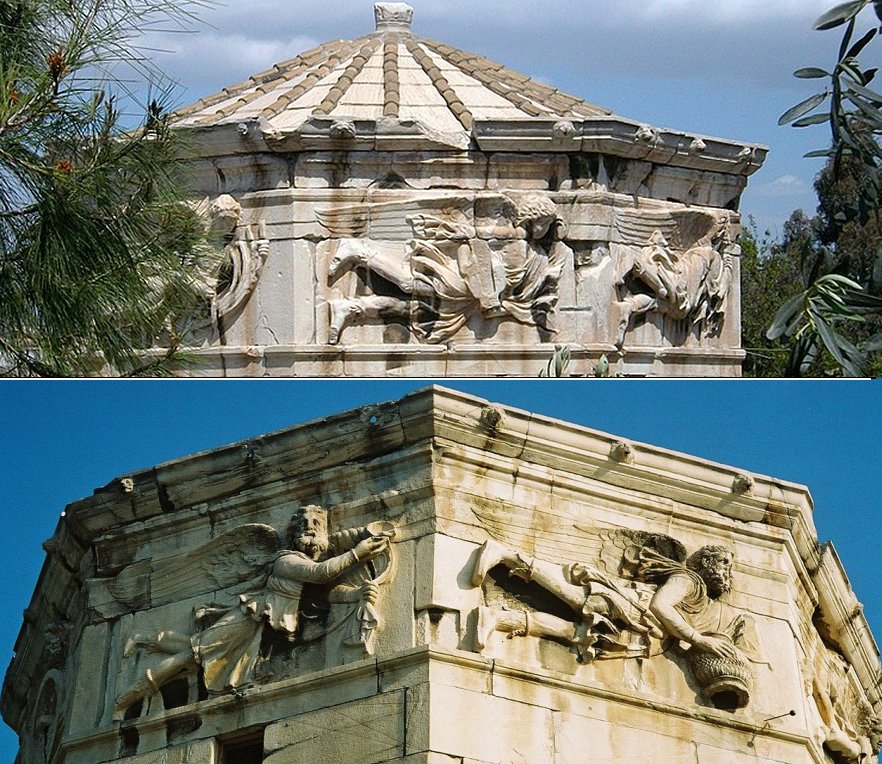Boreas – Mighty North Wind God In Greek Mythology
A. Sutherland - AncientPages.com - In Greek mythology, the Anemoi are the personifications of the winds, and their origin indicates a connection with the elemental forces of nature.
They are the sons of Titanides Eos, the goddess of the dawn, and Titan Astraeus (Astrajos), the god of the starry night.
Credit: Adobe Stock - Lefteris Papaulakis
One is Boreas (N)), the god of the north wind, which brings the cold winter. Others are Apeliotes (E), Kaikias (NE), Notus (S), Eurus (SE), Lips (SW), Zephyrus (W), and Skiron (NW).
Vicious and extremely strong, the Boreas (his Roman is Aquilo) had his abode in the Thracian mountains and brought the wintry north wind. Herodotus and Pliny the Elder (AD 23–79), ancient Roman nobleman, scientist, historian, and author of Naturalis Historia, describe this northern land as Hyperborea "Beyond the North Wind," where people experienced complete happiness and had extraordinarily long lifespans.
Usually flying in a chariot with swift horses (or wings) across the sky, Boreas was highly honored by the great city of Athens in the 5th century BC and even credited with destroying Persian ships with his winter winds.
It occurred when the city of Athens was threatened by Xerxes, the son of Darius the Great and the fourth King of Kings of the Achaemenid Empire, ruling from 486 to 465 BC.
The danger was so close that the people prayed to the mighty Boreas. The deity was then sent tremendous winds to sink 400 Persian ships. Grateful for the god's apparent help, the people of Athens established a cult dedicated to him in 480 BC.
The tower of the winds. Credit: Joanbanjo - CC BY-SA 3.0
A similar event had occurred twelve years earlier, and Herodotus wrote about the incident as follows:
" Now, I cannot say if this was really why the Persians were caught at anchor by the stormwind, but the Athenians are quite positive that, just as Boreas helped them before, so he was responsible for what happened on this occasion also. And when they went home, they built the god a shrine by the River Ilissus."
The river Ilissus plays an essential role in Greek mythology. It is a small river that rises from springs on Mount Hymettus in Attica, the territory of Athens.
The river – 'channeled underground in the first half of the twentieth century - flows southeast and south of Athens's ancient, central, fortified area. Before the diversion of its course, it used to be a tributary of the Cephissus (modern Kifisos) River. Ilissus is featured in tales of the city's legendary past as one of the two major rivers of Athens.
Notably, the banks of the Ilissus were the site of the abduction of Orithiya, daughter of the Athenian king Erechtheus, to Thrace by Boreas, god of the north wind,' wrote Annette Giesecke in her 'Classical Mythology A to Z.'
The Athenians even considered boreas as their close relative by marriage. The god kidnapped Orithyia while gathering flowers by the Ilissus River. Orithyia was an Athenian princess and daughter of Erechtheus, a legendary king and probably also a divinity of Athens.
At first, Boreas tried to plead for her favors, persuading her to marry him. However, when it failed, he wrapped the princess Orithyia up in a cloud, married her, and with her, had had two daughters, Chione, goddess of snow, and Cleopatra (the wife of Phineus) and two sons, the Boreads - Calais and Zetes, both known as the Boreads.
The abduction of Orithyia was widespread in Athens, and his depictions were popular, especially those on the Greek vases showing Boreas as a winged, bearded man in a tunic with shaggy, sometimes frosted, and spiked hair.
Pausanias, a Greek traveler and geographer of the second century AD, wrote that Boreas had snakes instead of feet, though he was usually depicted with winged human feet in art.
Written by – A. Sutherland - AncientPages.com Senior Staff Writer
Updated on March 14, 2023
Copyright © AncientPages.com All rights reserved. This material may not be published, broadcast, rewritten or redistributed in whole or part without the express written permission of AncientPages.com
More From Ancient Pages
-
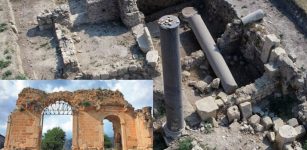 Rare Gladiator Tombs Found In Ancient City Of Anavarza In Southern Turkey
Archaeology | Aug 16, 2022
Rare Gladiator Tombs Found In Ancient City Of Anavarza In Southern Turkey
Archaeology | Aug 16, 2022 -
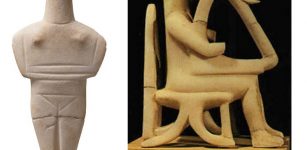 Cycladic Figurines Of Ancient Crete – International Symposium With Scholars From Around The World
News | Sep 25, 2015
Cycladic Figurines Of Ancient Crete – International Symposium With Scholars From Around The World
News | Sep 25, 2015 -
 How Was The Mysterious Menga Dolmen Built By Neolithic People? New Scientific Theory Presented
Archaeology | Aug 28, 2024
How Was The Mysterious Menga Dolmen Built By Neolithic People? New Scientific Theory Presented
Archaeology | Aug 28, 2024 -
 Oldest Evidence Of Beer Comes From Raqefet Cave, Dating Back To 11,000 B.C.
Archaeology | Sep 27, 2024
Oldest Evidence Of Beer Comes From Raqefet Cave, Dating Back To 11,000 B.C.
Archaeology | Sep 27, 2024 -
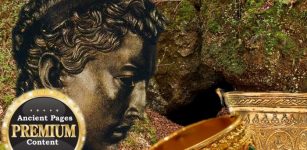 Gold Treasures Of Ancient King Discovered In North America Create Historical Problems
Ancient Mysteries | Jun 29, 2018
Gold Treasures Of Ancient King Discovered In North America Create Historical Problems
Ancient Mysteries | Jun 29, 2018 -
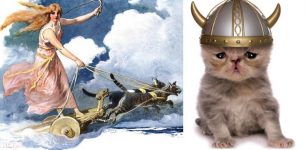 Cats Were Rare And Expensive During The Viking Age – Spectacular Discovery Reveals Why
Featured Stories | Jan 12, 2017
Cats Were Rare And Expensive During The Viking Age – Spectacular Discovery Reveals Why
Featured Stories | Jan 12, 2017 -
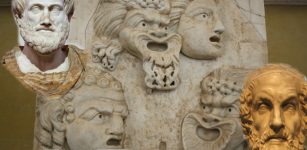 Ancient Suda: Massive Anonymous Byzantine-Greek Lexicon Dated To 10th Century
Featured Stories | Nov 6, 2018
Ancient Suda: Massive Anonymous Byzantine-Greek Lexicon Dated To 10th Century
Featured Stories | Nov 6, 2018 -
 Gigantic Kailasa Temple: Engineering Marvel Of India’s Master Builders
Featured Stories | Oct 17, 2020
Gigantic Kailasa Temple: Engineering Marvel Of India’s Master Builders
Featured Stories | Oct 17, 2020 -
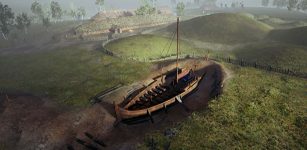 Archaeologists Reveal 12 Exciting Finds From The Gjellestad Viking Ship Dig
Archaeology | May 28, 2022
Archaeologists Reveal 12 Exciting Finds From The Gjellestad Viking Ship Dig
Archaeology | May 28, 2022 -
 Mysterious Valkyrie Eir Remains An Enigma In Norse Mythology
Featured Stories | Apr 4, 2018
Mysterious Valkyrie Eir Remains An Enigma In Norse Mythology
Featured Stories | Apr 4, 2018 -
 Ancient Native Americans’ Encounter With The Star People – An Otherworldly Rescue?
Ancient Mysteries | Jul 20, 2021
Ancient Native Americans’ Encounter With The Star People – An Otherworldly Rescue?
Ancient Mysteries | Jul 20, 2021 -
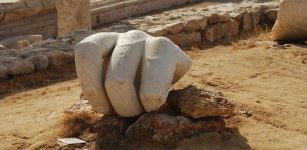 Mystery Of The Giant Hand At The Temple Of Hercules
Featured Stories | Jul 17, 2019
Mystery Of The Giant Hand At The Temple Of Hercules
Featured Stories | Jul 17, 2019 -
 On This Day In History: The Battle of Mortimer’s Cross – On Feb 2, 1461
News | Feb 2, 2017
On This Day In History: The Battle of Mortimer’s Cross – On Feb 2, 1461
News | Feb 2, 2017 -
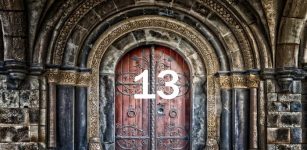 Number 13: Coincidence Or Bad Luck – Are We Still Superstitious?
Featured Stories | Dec 9, 2020
Number 13: Coincidence Or Bad Luck – Are We Still Superstitious?
Featured Stories | Dec 9, 2020 -
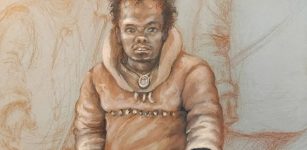 Ice Age Teens Experienced Puberty Stages Similar To Modern Adolescents, Study Reveals
Archaeology | Sep 13, 2024
Ice Age Teens Experienced Puberty Stages Similar To Modern Adolescents, Study Reveals
Archaeology | Sep 13, 2024 -
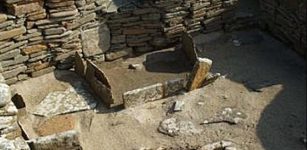 First Bathrooms Appeared Around 8,000 B.C In Scotland
Ancient History Facts | Dec 11, 2016
First Bathrooms Appeared Around 8,000 B.C In Scotland
Ancient History Facts | Dec 11, 2016 -
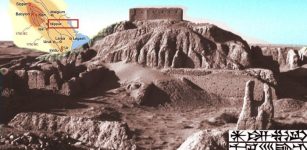 Nippur – Holy City Of God Enlil And One Of The Oldest Cities Of Sumer
Featured Stories | Jul 24, 2023
Nippur – Holy City Of God Enlil And One Of The Oldest Cities Of Sumer
Featured Stories | Jul 24, 2023 -
 Chonchon ‘Tue Tue’ Bird With Human Head Brought Bad Omens To Places It Haunted In Beliefs Of Mapuche Indians
Myths & Legends | Mar 12, 2024
Chonchon ‘Tue Tue’ Bird With Human Head Brought Bad Omens To Places It Haunted In Beliefs Of Mapuche Indians
Myths & Legends | Mar 12, 2024 -
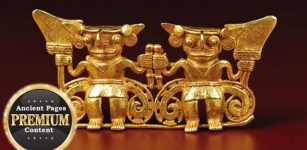 Bolivia And The Mystery Of The Twins Of Atlantis
Ancient Mysteries | Nov 16, 2014
Bolivia And The Mystery Of The Twins Of Atlantis
Ancient Mysteries | Nov 16, 2014 -
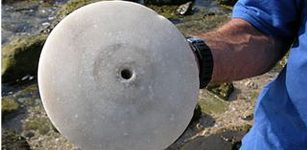 A 2,500-Year-Old Marble Disc, Designed To Protect Ancient Ships And Ward Off The Evil Eye – Discovered
Archaeology | Aug 4, 2023
A 2,500-Year-Old Marble Disc, Designed To Protect Ancient Ships And Ward Off The Evil Eye – Discovered
Archaeology | Aug 4, 2023


